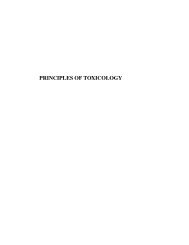Insect-pests - Biology East Borneo
Insect-pests - Biology East Borneo
Insect-pests - Biology East Borneo
You also want an ePaper? Increase the reach of your titles
YUMPU automatically turns print PDFs into web optimized ePapers that Google loves.
32 <strong>Insect</strong> Pests and Diseases of Major Plantation Species<br />
Another sporadic pest is the yellow butterfly, Eurema<br />
spp. (mainly E. blanda and to a lesser extent E. hecabe<br />
and others), whose caterpillars often build up in large<br />
numbers and cause locally widespread defoliation.<br />
Severe defoliation occurs occasionally in Java,<br />
Sumatra, Kalimantan and Sulawesi (Tikupadang et al.<br />
1993; Irianto et al. 1997; Suhendi and Sembiring<br />
1998). Although heavy defoliation may cause dieback<br />
of branches (Irianto et al. 1997), the infestation is<br />
usually transient and the damage not serious.<br />
Other minor <strong>pests</strong> reported on P. falcataria include a<br />
few species of scarabaeid beetles whose larvae feed<br />
on the roots of saplings, the bark feeding caterpillar,<br />
Indarbela quadrinotata, the twig borer, Xylosandrus<br />
morigerus (Tikupadang et al. 1993) (Table 4.8), and<br />
other polyphagous, occasional feeders.<br />
plantations in South Kalimantan and Jambi, Sumatra<br />
(Anggraeni and Suharti 1997). Older trees are attacked<br />
by root rot fungi of the genera, Ganoderma (Widyastuti<br />
et al. 2000) Ustulina and Rosellinia. Dieback due to<br />
unknown reasons has been reported by some<br />
companies. Generally, root rot is a problem only in trees<br />
older than 10 years. Except for nursery diseases that<br />
can be controlled, P. falcataria does not suffer from<br />
any major disease.<br />
Table 4.9. Diseases of Paraserianthes falcataria in Indonesia<br />
Disease<br />
Damping-off<br />
Causative agent<br />
Pythium sp.<br />
Phytophthora sp.<br />
Rhizoctonia sp.<br />
Notes<br />
On seedlings<br />
Diseases<br />
Damping-off caused by Pythium, Phytophthora and<br />
Rhizoctonia spp. is common in nurseries (Table 4.9).<br />
Anthracnose disease, characterised by sudden death of<br />
the seedlings and caused by Colletotrichum sp., has<br />
been reported (Kobayashi and Zinno 1984). Root rot<br />
disease caused by Botryodiplodia sp. occurs in young<br />
Anthracnose<br />
disease<br />
Root rot<br />
Colletotrichum sp.<br />
Botryodiplodia sp.<br />
Ganoderma sp.<br />
Ustulina sp.<br />
Rosellinia sp.<br />
On seedlings<br />
On young trees<br />
On older trees<br />
Table 4.8. <strong>Insect</strong> <strong>pests</strong> of Paraserianthes falcataria in Indonesia<br />
Type of damage<br />
Scientific name<br />
Common name<br />
Notes<br />
Trunk boring<br />
Xystrocera festiva<br />
(Coleoptera, Cerambycidae)<br />
Sengon borer<br />
(albizia borer)<br />
Serious pest<br />
X. globosa<br />
-<br />
Minor pest<br />
Leaf feeding<br />
Pteroma plagiophleps<br />
(Lepidoptera, Psychidae)<br />
Small bagworm<br />
Occasionally serious;<br />
feeds also on bark<br />
surface<br />
Eurema blanda<br />
(Lepidoptera, Pieridae)<br />
Yellow butterfly caterpillar<br />
Sporadic<br />
Root feeding<br />
Several species<br />
(Coleoptera, Scarabaeidae)<br />
White grubs<br />
On saplings<br />
Bark feeding<br />
Indarbela quadrinotata<br />
(Lepidoptera, Indarbelidae)<br />
Bark caterpillar<br />
Twig boring<br />
Xylosandrus morigerus<br />
(Coleoptera, Scolytidae)<br />
Scolytid beetle
















